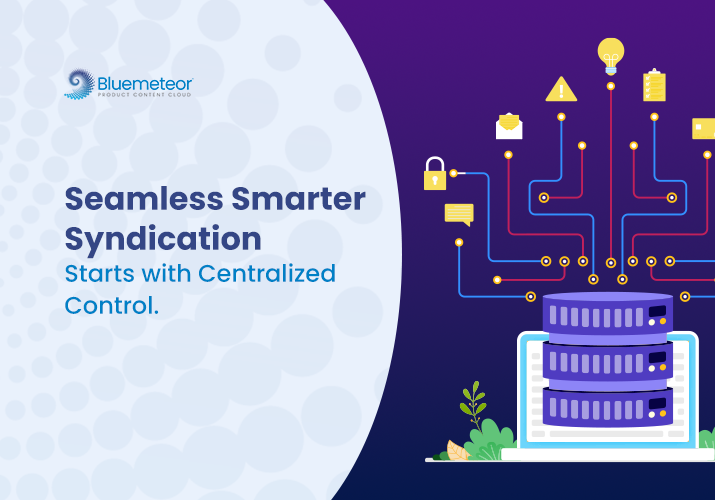How PIM Systems Help You Centralize, Simplify, and Scale Product Data Management

Handling product data is now more than just a behind-the-scenes task. Today, it has become a strategic necessity. Product Information Management (PIM) systems help businesses centralize data, simplify workflows, and scale operations across channels.
By automating manual tasks, improving data quality, and supporting omnichannel growth, PIM systems are now essential for digital success. In this article, we explore how PIM systems solve modern data challenges and support long-term business growth.
Why Product Data Management is More Complex Than Ever
E-commerce is booming, and product lines are expanding rapidly. Customers now expect real-time accuracy across every touchpoint, from websites and marketplaces to mobile apps and in-store experiences.
With this growth comes complexity. Businesses manage thousands of SKUs across regions, platforms, and sales channels. Each product may have variations in specifications, pricing, and availability.
Managing this manually is time-consuming and risky. Inconsistent descriptions and missing attributes can lead to confusion, returns, and lost sales. Using outdated spreadsheets or disconnected systems only worsens the problem.
According to a 2024 Forrester report, many retailers struggle with fragmented product data. Inaccurate information directly impacts revenue, making centralized, consistent, and scalable product data management essential for competitiveness.
Case example: A mid-sized manufacturer struggled to keep product descriptions consistent across their online catalog and retail partners. By adopting a PIM system, they centralized all data in one platform, reducing errors and improving the customer experience.
What is a Product Information Management (PIM) System?
A PIM system serves as a central hub for collecting, managing, and distributing product information across various channels. It ensures that all product details, including descriptions, images, specifications, and pricing, remain accurate and consistent.
Think of it as the single source of truth for all your product content.
Key Benefits of a PIM System
1. Centralize Product Data Across Systems and Sources
Modern businesses rely on multiple tools: ERPs, spreadsheets, supplier portals, and e-commerce platforms. Managing product data across these disconnected systems creates inefficiencies.
| Challenge | How PIM Helps | Example |
| Data silos | Centralizes all product information | Supplier updates automatically synced |
| Duplication | Reduces repeated entries across tools | SKU updates reflected in all channels |
| Collaboration | Teams can access a single source of truth | Marketing and IT work on the same dataset |
Case example: A distributor with multiple regional offices was manually reconciling product info from various sources. Centralizing data in a PIM improved team collaboration and reduced errors.
2. Simplify Complex Workflows
Tasks like SKU onboarding, content enrichment, taxonomy mapping, and image tagging take significant time. PIM systems use automation to speed up these processes and reduce manual entry.
Case example: An online retailer used AI-powered automation for multi-language translations of product descriptions, drastically reducing the time needed to launch products in new markets.
3. Enhance Product Data Accuracy and Quality
Clean and accurate product data builds customer trust. PIM systems validate information, detect inconsistencies, and maintain version control. Compliance is easier to manage across regions and product lines.
Case example: A consumer electronics brand reduced mislabeling and incorrect specifications across online platforms by using PIM-driven validation workflows.
4. Scale Effortlessly Across Channels and Markets
Expanding into new channels introduces complexity. Each platform, such as Amazon, Shopify, or Walmart, has its own content requirements.
| Challenge | PIM Solution | Example |
| Multiple channels | Single-source content adaptation | Automatic channel-specific formatting |
| Branding consistency | Central control over updates | Marketing ensures uniform messaging |
| Localization | AI-driven translation | Launch in new regions quickly |
Case example: A fashion brand scaled internationally by managing product content centrally, ensuring consistent branding across multiple e-commerce platforms.
5. Boost Operational Efficiency and Reduce Costs
PIM systems cut down time spent on manual data entry and minimize costly errors. Automation improves collaboration with suppliers and partners, reducing redundancy and freeing resources for strategic initiatives.
Case example: A home goods supplier onboarded new product information in minutes instead of days, allowing the team to focus on improving merchandising strategies.
6. Empower Marketing and Merchandising Teams
Product content is a marketing tool. PIM gives teams easy access to product images, attributes, and descriptions, allowing for faster execution of campaigns and promotions.
Case example: A health product retailer enabled their SEO and merchandising teams to enhance content independently, improving product page visibility and conversions.
Bluemeteor Inc: Applied AI for Smarter Product Data
At Bluemeteor, we go beyond traditional PIM systems. Our AI-powered Product Content Cloud automates onboarding, enrichment, classification, and even SEO optimization.
How Bluemeteor solves common challenges:
| Challenge | Bluemeteor Solution |
| Manual data errors | AI-driven validation and anomaly detection |
| Slow product launches | Automation accelerates SKU onboarding |
| Multi-channel complexity | Centralized content with channel-specific adaptations |
| Marketing dependencies | Teams access structured data independently |
With AI Studio, our autonomous agents handle:
- Auto classification and taxonomy mapping
- Content generation and metadata tagging
- Real-time anomaly detection
- SEO optimization and content localization
- AI-generated images and videos
Bluemeteor helps businesses transition to Autonomous PIM, a self-learning system that simplifies workflow while scaling product operations.
Ready to Centralize, Simplify, and Scale Your Product Data?
Managing product information across systems, teams, and sales channels no longer needs to be a struggle. A modern PIM system transforms scattered, error-prone data into a streamlined, scalable engine for growth.
Whether expanding to new markets, launching products faster, or improving customer experience, now is the time to simplify product content management.
Next step: Talk to our team today to see how Bluemeteor’s AI-powered PIM solutions can unlock your full business potential.




